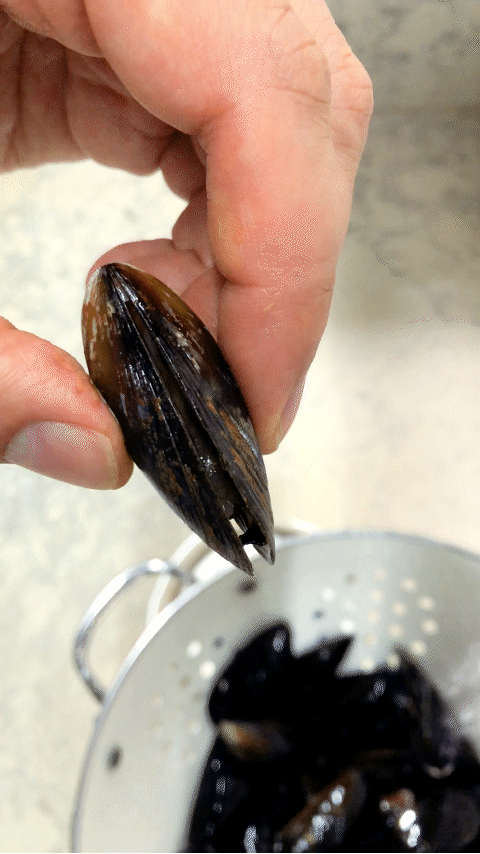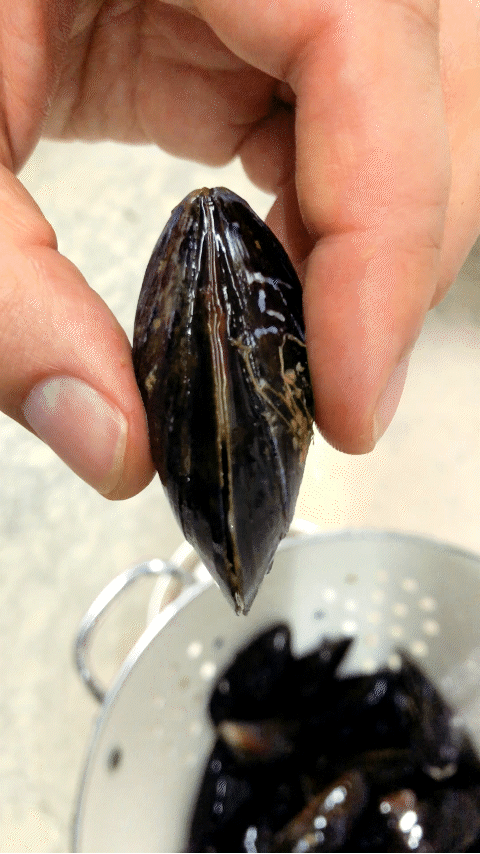When my partner and I first started dating, one of our go-to dinners—or appetizers, if we were really going for it—was steamed mussels. A mussel dinner feels cosmopolitan, but it’s actually pretty budget-friendly. Plus, you can buy, clean, and cook a bag of mussels in under an hour. We’d spoon the shellfish from their deep sauté pan into shallow bowls, piling their shiny shells high and always going in for an extra ladle of the briny broth (the real prize), which we’d soak up with crusty charred bread. As the saucy aroma filled the air, I would pry a shell apart with my fingers and slurp the broth trapped inside. It was a singular moment of luxury my publishing salary could afford.
“A bowl of mussels is meant to be shared,” says Jeremy Sewall, chef-owner at Boston’s Row 34, who makes massive pots of steamed mussels for family and friends all through fall and winter. Chef Félix Landrum grew up eating mussels every New Year’s Eve, a French tradition. Today, the dish is a nightly feature at his eponymous restaurant in Charleston. You can’t get around it: Mussels just feel celebratory.
To find out how to clean mussels like a pro, we asked Landrum and Sewall for their best tips, plus got details on what to look for when buying and cooking mussels. Below, find our guide to preparing mussels, plus a few of our favorite recipes.
Shopping for mussels:
Like any quality seafood, there are a few pointers to remember when buying mussels: Make sure to buy them from a fishmonger or grocery store you trust. Avoid frozen mussels whenever possible, which have a rubbery, unpleasant texture. Both Sewall and Landrum prefer Prince Edward Island mussels. These farm-raised mussels grow in deep, cold waters on ropes, so they don’t collect debris as easily as wild mussels harvested from silty shores. As a result, they’re already pretty clean by the time they reach your hands.
Sewall encourages cooks to try local mussels whenever available. Mussels—and all seafood, for that matter—develop flavors that reflect their habitat (yes, like wine grapes). If you live near a coast, do a little digging to find out if mussels are harvested in your area.
Mussels should be alive when you buy them and stay that way until you cook them. “Ideally, you’ll buy mussels the same day you use them,” Sewall explains. Fresh mussels should smell mild and sweet, almost like the ocean–not fishy. Ensure the mussel shells are shiny, free of cracks or breakage, and tightly shut. If you have an open mussel or two in the bag, give it a light tap against the counter or squeeze the shell. The shell should close and remain shut. If it opens again, that’s a sign it’s dead and likely should be discarded.
How to clean mussels:
If you don’t plan to cook the mussels immediately after buying them, keep them in the refrigerator under a cool, damp kitchen towel, but don’t store them in water. “If they soak in water too long, you can kill them,” Landrum says. Additionally, wait to clean the mussels until you’re ready to cook them. Cleaning mussels prematurely can cause stress, and the bivalve may die.






















+ There are no comments
Add yours